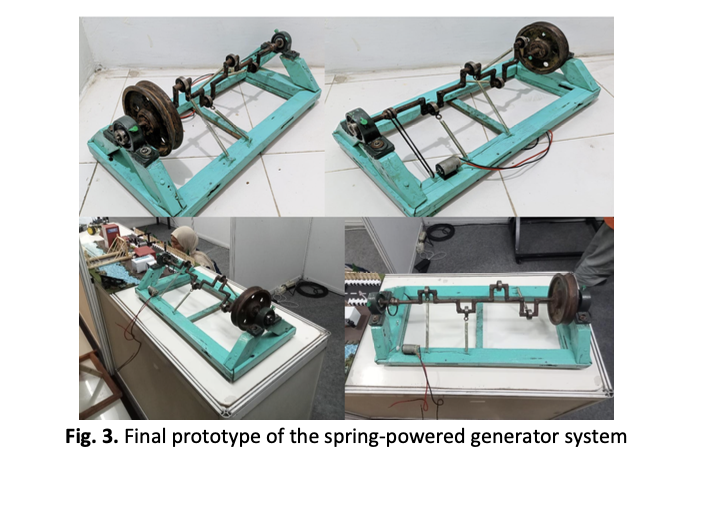Designing a Spring-Powered Generator Prototype as an Alternative Power Source
Keywords:
Generator, spring energy, flywheel, renewable energy, prototypeAbstract
Most renewable energy sources such as solar and wind power rely heavily on environmental conditions, which limits their consistency and availability. Conventional small-scale mechanical generators, meanwhile, often suffer from low efficiency and limited adaptability for portable applications. This study aims to design and evaluate a spring-powered generator prototype capable of generating electricity independently of external conditions. The system uses four helical springs arranged in a zig-zag configuration (0°–180°–0°–180°) connected to a main shaft and flywheel to produce rotational motion, which is then converted into electrical energy using a 12 V DC generator. Experimental results show a maximum output voltage of 5.3 V and a rotation duration of approximately 9 seconds. The overall energy conversion efficiency reaches about 6.4%, indicating moderate performance that can be further enhanced through optimization of spring stiffness and flywheel mass. These findings demonstrate the feasibility of spring-based mechanical systems as compact, low-cost, and environmentally friendly power sources for small-scale, off-grid, or educational applications.







